Cyber Monday Special Limited Time 70% Discount Offer - Ends in 0d 00h 00m 00s - Coupon code = getmirror
Pass the Fortinet NSE 7 Network Security Architect NSE7_LED-7.0 Questions and answers with ExamsMirror
Exam NSE7_LED-7.0 Premium Access
View all detail and faqs for the NSE7_LED-7.0 exam
545 Students Passed
87% Average Score
90% Same Questions
Refer to the exhibit.
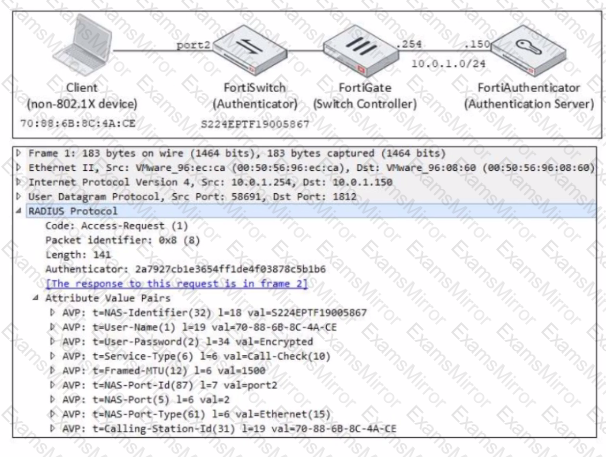
Examine the network diagram and packet capture shown in the exhibit
The packet capture was taken between FortiGate and FortiAuthenticator and shows a RADIUS Access-Request packet sent by FortiSwitch to FortiAuthenticator through FortiGate
Why does the User-Name attribute in the RADIUS Access-Request packet contain the client MAC address?
Refer to the exhibit
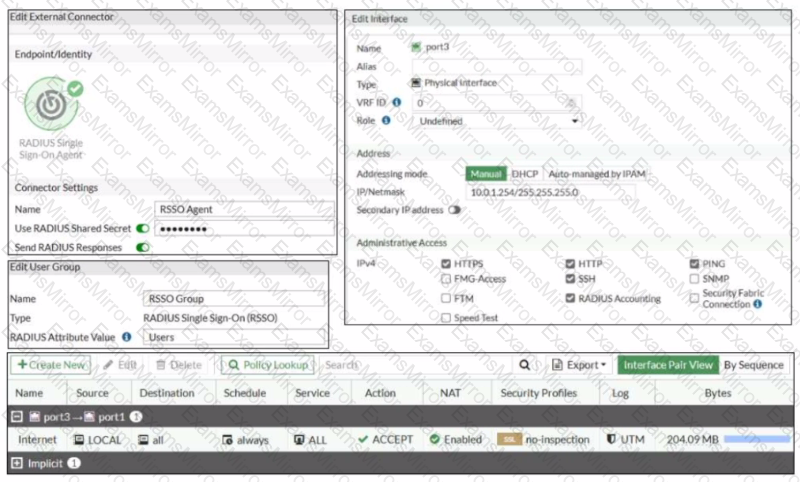
Examine the FortiGate RSSO configuration shown in the exhibit
FortiGate is configured to receive RADIUS accounting messages on port3 to authenticate RSSO users The users are located behind port3 and the internet link is connected to port1 FortiGate is processing incoming RADIUS accounting messages successfully and RSSO users are getting associated with the RSSO Group user group However all the users are able to access the internet, and the administrator wants to restrict internet access to RSSO users only
Which configuration change should the administrator make to fix the problem?
Where can FortiGate learn the FortiManager IP address or FQDN for zero-touch provisioning'?
A wireless network in a school provides guest access using a captive portal to allow unregistered users to self-register and access the network The administrator is requested to update the existing configuration to provide captive portal authentication through a secure connection (HTTPS)
Which two changes must the administrator make to enforce HTTPS authentication"? (Choose two >
Which FortiSwitch VLANs are automatically created on FortGate when the first FortiSwitch device is discovered1?
Which two statements about FortiSwitch trunks are true? (Choose two.)
Refer to the exhibit.
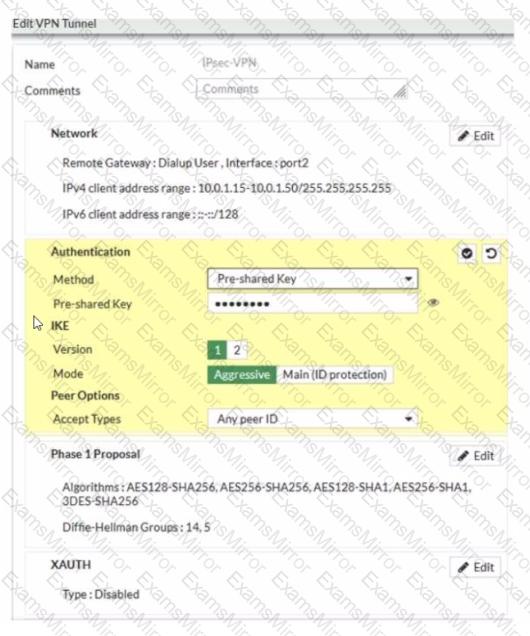
Examine the IPsec VPN phase 1 configuration shown in the exhibit
An administrator wants to use certificate-based authentication for an IPsec VPN user
Which three configuration changes must you make on FortiGate to perform certificate-based authentication for the IPsec VPN user? (Choose three)
Refer to the exhibit.
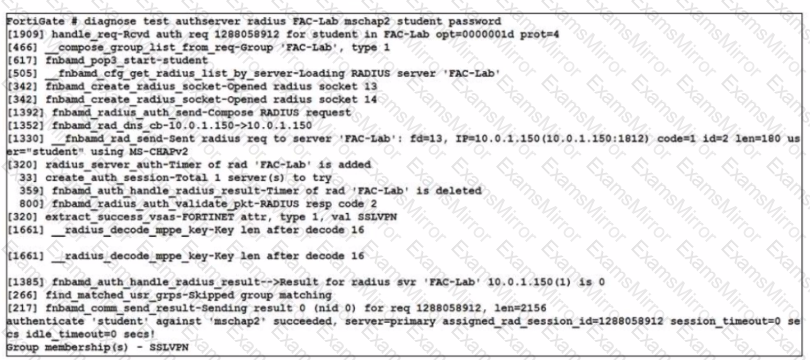
Examine the debug output shown in the exhibit
Which two statements about the RADIUS debug output are true'' (Choose two)
Refer to the exhibits.
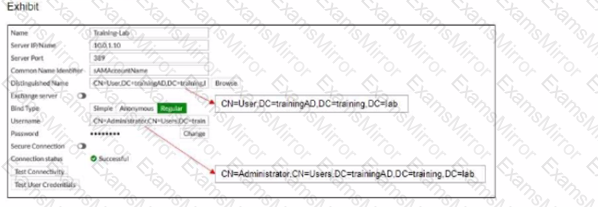
Examine the LDAP server configuration and output shown in the exhibits.
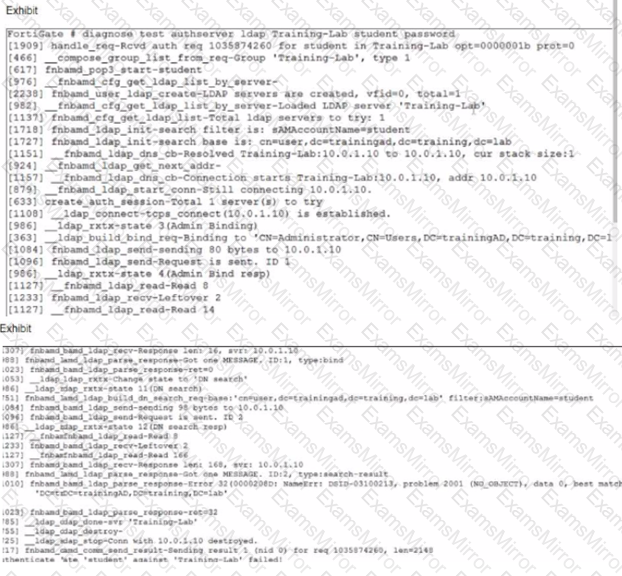
Note that the Distinguished Name and Username settings on the LDAP server configuration have been expanded to display their full contents.
An LDAP user named student cannot authenticate. While testing the student account, the administrator gets the CLI output shown in the exhibit.
According to the output, which FortiGate LDAP server settings must the administrator check?
An administrator is deploying AP's that are connecting over an IPsec network. All APs have been configured to connect to FortiGate manually. FortiGate can discover the APs and authorize them. However, FortiGate is unable to establish CAPWAP tunnels to manage the APs.
Which configuration setting can the administrator perform to resolve the problem?
TOP CODES
Top selling exam codes in the certification world, popular, in demand and updated to help you pass on the first try.
